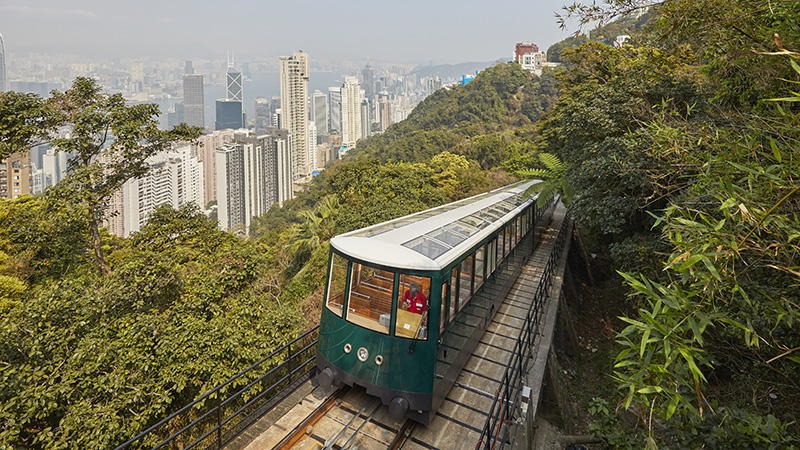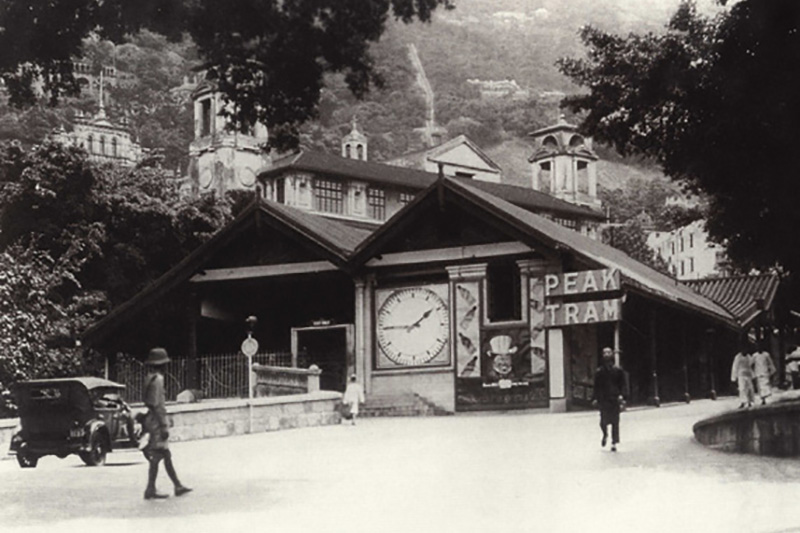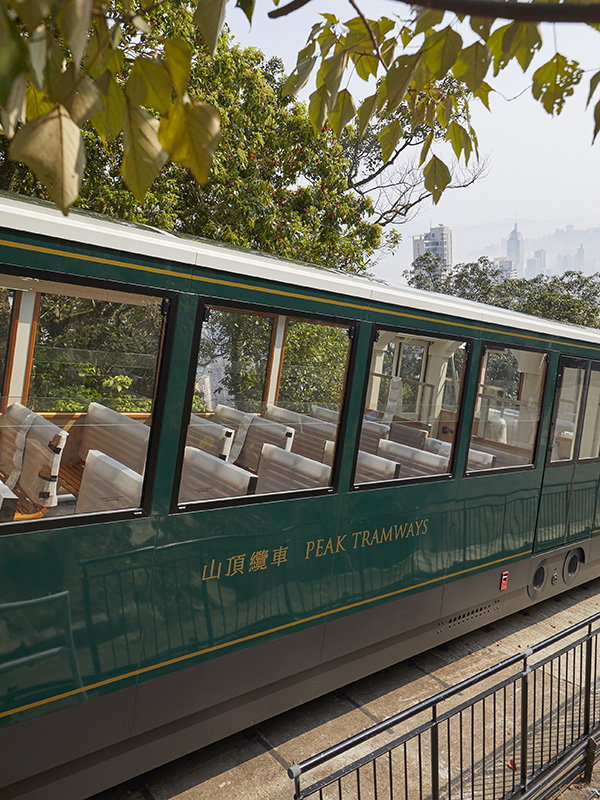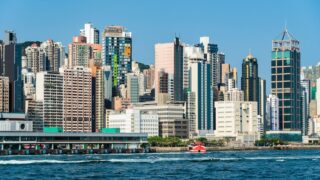When we ask our readers about some of the iconic things they like to do when guests come to stay, the number one answer is taking the tram up to the Peak. And with views like those, we don’t blame you! Here’s a whole bunch of trivia, history and news about the tram that you can regale your visitors with on your next ride, if conversation (or the tram!) happens to stall.
A New-look Peak Tram for 2022
The next generation of Peak Tram is on its way! You’ll recall that the burgundy-coloured 5th-generation version of the popular tram was retired in June 2021, to make way for a multimillion dollar upgrade. Well, that upgrade is almost finished. A successful test run of the new 6th-generation cars was carried out in early March 2022, and the new-look Peak Tram is set to open in summer.

The Peak Tram by the Numbers
Length of track: 1.36 kilometres
Width of cables: 4.4 centimetres
Change in elevation: 46 to 396 metres above sea level
Gradient: Between 6 and 26 degrees
Journey time: just under 5 minutes
Maximum speed: approximately 21.6 kilometres per hour
10 Tram Facts
#1 Ever walked along Findlay Road or the Findlay Path during a visit to the Peak? The name comes from Alexander Findlay Smith, a Scot who came up with the idea of the Peak Tram in the early 1880s.
#2 The idea was prompted by the growing popularity of the Peak as a summer retreat. It was Sir Richard MacDonnell, Governor of Hong Kong, who first built a summer house near the summit, in 1868. Other houses followed, and Findlay realised the need for a transport option to the top. At the time, the only way up was to walk or get carried up on a sedan chair – a rather bumpy ride…
#3 Construction began in 1885 and lasted for three years. And it was no easy feat: after all, every piece of equipment or material required for the build had to be carried up the mountain!
#4 The first tram rolled out of the Garden Road terminus on 28 May 1888, opened by then governor Sir George William des Voeux. Around 800 passengers piled into the cars on that first day, and were powered to the top of the Peak by coal-fired steam power.

#5 For almost 40 years, the Peak Tram had three classes of travel: First Class for British officials and Victoria Peak residents (30 cents); Second Class for British and Hong Kong military and police (20 cents); and Third Class for everyone else (10 cents).
#6 The Peak Tram is what’s known as a double reversible funicular railway. The word funicular comes from the Latin “funiculus” meaning “rope”; that’s what the cables used to be made from.
#7 Natural disasters have twice affected the Tram’s service. In 1899 and again in 1966, flooding and rainfall washed away sections of the track. During the Battle of Hong Kong in 1941, the engine room was damaged; the service to the Peak remained closed for the next four years, finally opening again on Christmas Day in 1945.
#8 Before the pandemic came along, passenger numbers on the Peak Tram were up around four million a year.
#9 The Peak Tram plays a part in the 1950s Clark Gable film, Soldier of Fortune (both the opening and closing scenes are shot inside the tram). And it also appears in an episode of long-running TV series The Love Boat.
#10 When it launches in summer (stay tuned for the date!), the new-look 6th-generation tram, which is being manufactured in Switzerland, will carry 210 passengers compared to 120. The haulage and control systems have also been upgraded. Plus, the cars will boast wider doors, disabled access and larger panoramic windows for better views of that iconic HK skyline. In a departure from the burgundy colour of the 5th generation, the new tramcars will be coloured “Peak Tram Green”. The shade echoes earlier 3rd and 4th generation cars from the 1940s to the 1980s.

Did You Know?
According to thepeak.com.hk, studies have shown that passengers riding uphill on the Peak Tram can experience a visual illusion, where the high-rise buildings on the righthand side of the tram look like they are falling backwards towards the Peak.
Find out more at the Peak Tram website.
Like this? Read more fun facts about Hong Kong in our Living in Hong Kong section:





